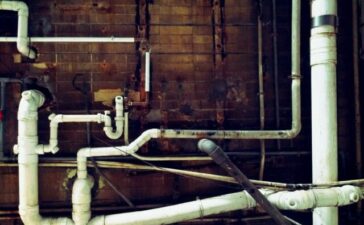It is important that waterproofing is carried out by experts like prydegroupcorp.com, equipped with the latest in waterproofing technology. If you want to know more about the benefits of waterproofing, keep reading.
Advantages of waterproofing: Get to know them one by one
If we take into account that water infiltration is the second cause of damage to buildings, you can already imagine the magnitude of the advantages if you decide to waterproof. These are the main advantages of waterproofing.
- Your property increases in value.
- It maintains the structure of your home as well as the foundation.
- You create a much healthier environment for your family.
- Your spaces will retain heat better during the winter season.
Water flowing through gutters will cause short-term damage to the interior structure of your home. If a leak is not corrected in time, the damage could be irreversible. Remember that building materials usually have a shorter shelf life when exposed to moisture.
What types of waterproofing do you need? These three are the most recommended
Before waterproofing, you must first know what is causing the water to end up on your walls or ceilings. There are partial waterproofing methods to correct a leaky ceiling, wall or floor. Here we will show you the most commonly used waterproofing methods.
Waterproofing terraces
One of the best techniques for waterproofing terraces and other surfaces made of concrete, steel, cement, is usually rubber chloride. This waterproofing agent is a derivative of rubber combined with fiberglass, which increases its capacity to repel water. It adheres perfectly to any type of surface, with swimming pools and terraces being the places where it is most commonly used. One of the advantages of this waterproofing agent is the possibility of being able to apply paint to it.
Waterproofing walls
Humidity deteriorates walls. This type of leak is the main cause of damage to buildings. Although the durability of walls has to do with the porosity and density with which they are made, it is vitally important to protect them with a good waterproofing coating.
There are different types of waterproofing and uses to strengthen the maintenance of walls. These will act on the steel, wood or cement of which your walls are made. The various types of waterproofing for walls are made of synthetic resin, polyurethane, concrete, acrylic and petroleum derivatives.
Waterproofing roofs
To waterproof roofs, it will depend on the roof on which it will be applied, that is, if it is flat or you will place it under tiles. In the former, the best fit is asphalt or acrylic membranes. If, on the other hand, the surface to be worked on is roofs under tiles, materials such as asphalt paper or polyethylene film will be the most appropriate. However, the result will depend more on a correct application than on the material itself.
The type of roof waterproofing will also depend on where the house is located. If your house is located in a place where it rains a lot or in a wooded area, cold asphalt is a suitable option, a combination of emulsified water, fiberglass, polyester and solvent. Below, you can learn about the types of roof waterproofing that exist:
- Acrylic waterproofing: This type is similar to exterior paint and its colors can be white or red. It is ideal for zinc and fiber cement roofs. The white color reflects sunlight. This will keep the rooms and spaces in your house cool. You will also save on energy consumption.
- Hot asphalt: Also known as “bitumen,” it is a combination of melted fiberglass and asphalt cardboard. After application, it must be covered with a reflective paint. It is ideal for roofs of industrial and institutional buildings.
- Acrylic resin: The type of waterproofing you need if you have leaks and want a quick application. It works for all types of concrete and metal-based structures; for roofs and terraces.
To learn more about the materials to waterproof your home, visit prydegroupcorp.com, we offer you the best advice with expert personnel in waterproofing.







